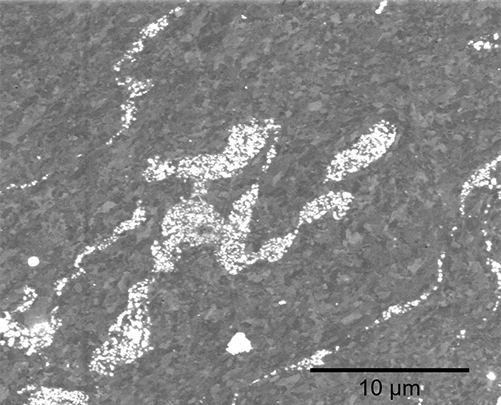Engineering strength
Carnegie Mellon University engineers are answering the need for heat-tolerant materials by developing a new way to strengthen metals using oxide particles.
The following story is an excerpt of an article published in Industrial Heating.
Metals like iron and aluminum make up much of the modern world around us—from cars to wind energy turbines—because they are strong, lightweight, and cost-efficient materials. But as the heat is turned up on these metals, their mechanical properties and strength can be compromised. The need therefore continues to grow for advanced structural materials that can withstand high temperatures for applications in expanding industries like power generation and chemical processing.
Carnegie Mellon University researchers are answering the need for heat-tolerant materials by developing a new way to strengthen metals using oxide particles. Bryan Webler, assistant professor of materials science and engineering, and his research group have created a two-step method to disperse oxide particles into solid bulk alloys.
It’s interesting when we can use chemical reactions in metal processing as a tool to improve the properties of a material.
Bryan Webler, Assistant Professor, Materials Science and Engineering, Carnegie Mellon University
First, the bulk alloy is introduced to specific atmospheric conditions to quickly cause internal oxidation. Second, a process called severe plastic deformation is performed to evenly distribute and refine the internally formed oxide particles.
To explain, Webler gives the example of an iron aluminum alloy. “If you take a solid bulk material with aluminum atoms dissolved in an iron matrix and you expose it to the right set of atmospheric conditions, you’ll form little aluminum oxide particles inside the metal matrix,” says Webler. “By evenly dispersing these little oxide particles in your metal matrix, you have a composite material that exhibits better properties than just the metal on its own. The oxides are very stable and don’t change at high temperatures.”

Source: Bryan Webler
Scanning electron micrograph (5000x magnification) of oxidized Fe-Y alloy after severe plastic deformation by equal channel angular pressing. The light areas are Y2O3 and the gray matrix is Fe. The project goal is to create the most uniform possible dispersion of the Y2O3 in the Fe matrix.
Webler’s research at Carnegie Mellon focuses around metals reacting with their environment. So, the inspiration for this work was drawn from a new twist on a simple chemical reaction.
“Most often, when researchers think about how metals react in their environments, we are thinking about preventing a reaction that could be potentially harmful to the structure of a material. But it’s interesting when we can use chemical reactions in metal processing as a tool to improve the properties of a material,” says Webler.
